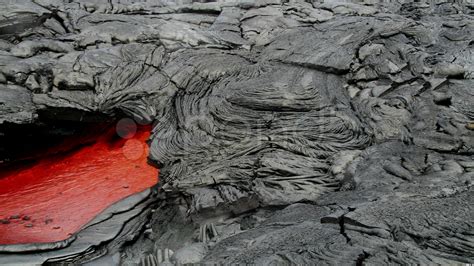Magma, a molten rock beneath the Earth’s surface, plays a pivotal role in various geological processes and has significant implications for human activities.

Composition and Properties of Magma
Magma is composed primarily of molten rock, containing minerals, dissolved gases, and crystals. Its temperature typically ranges from 700 to 1,300 degrees Celsius (1,292 to 2,372 degrees Fahrenheit). The composition of magma varies depending on the source material, depth of formation, and other factors.
Formation and Types of Magma
Magma forms when rocks beneath the Earth’s surface melt due to high temperature, pressure, or both. This melting process can occur in different geological settings, such as volcanic eruptions, geothermal areas, and plate boundaries. Based on its chemical composition, magma is classified into various types, including basaltic, andesitic, rhyolitic, and more.
Magma’s Role in Volcanism
Magma is the primary source of volcanic eruptions. When magma rises to the surface through vents or fissures in the Earth’s crust, it can form volcanoes. Volcanic eruptions can be highly destructive, releasing ash, lava, and gas into the atmosphere. However, volcanoes also play a role in creating new landforms and enriching the soil with minerals.
Magmatic Rocks
When magma cools and solidifies, it forms igneous rocks. Igneous rocks make up a significant portion of the Earth’s crust and can provide valuable information about the geological history of an area. The type of igneous rock formed depends on the composition of the magma and the cooling conditions.
Geothermal Energy
Magma’s high temperature can be harnessed for geothermal energy. Geothermal power plants use heat from magma to generate electricity, a clean and renewable source of energy. Worldwide, geothermal energy has the potential to provide a substantial share of electricity production.
Exploration and Research
Exploration for magma is critical for understanding volcanic activity, assessing geothermal potential, and mitigating volcanic hazards. Scientists use various geophysical techniques, such as seismic imaging and ground deformation monitoring, to locate and study magma bodies. Ongoing research aims to improve our understanding of magma’s behavior and predict volcanic eruptions more accurately.
Applications and Innovations
The study of magma opens up possibilities for innovative applications. For example, researchers are exploring the concept of “magma mining,” where valuable minerals dissolved in magma could be extracted using advanced technologies. Additionally, studying magma’s behavior can inform the development of heat-resistant materials and improved disaster mitigation strategies.
Tables
Table 1: Magma Composition
| Component | Percentage |
|---|---|
| Silicon dioxide (SiO2) | 45-75% |
| Aluminum oxide (Al2O3) | 10-20% |
| Calcium oxide (CaO) | 5-10% |
| Magnesium oxide (MgO) | 5-10% |
| Iron oxide (FeO) | 5-10% |
| Dissolved gases | 1-5% |
Table 2: Magma Types
| Type | SiO2 Content |
|---|---|
| Basaltic | < 52% |
| Andesitic | 52-62% |
| Rhyolitic | > 62% |
Table 3: Geothermal Energy Potential
| Country | Geothermal Electricity Production (2020) |
|---|---|
| United States | 3,903 MW |
| Indonesia | 2,245 MW |
| Kenya | 822 MW |
| Turkey | 803 MW |
| New Zealand | 767 MW |
Table 4: Magma Applications
| Application | Benefits |
|---|---|
| Geothermal energy | Clean, renewable energy source |
| Magma mining | Extraction of valuable minerals |
| Heat-resistant materials | Improved safety in extreme environments |
| Volcano hazard mitigation | Advance warning systems, evacuation plans |
